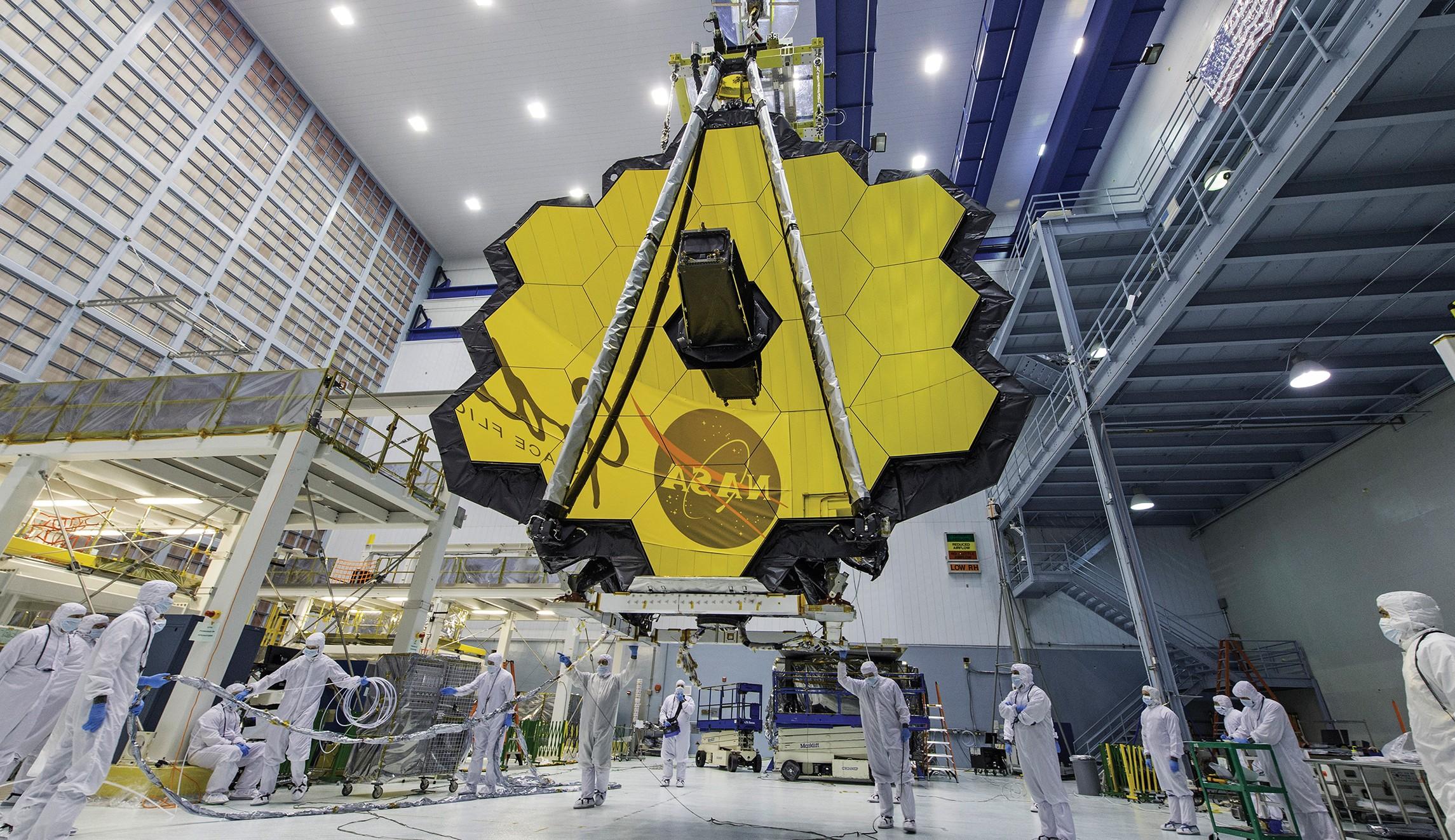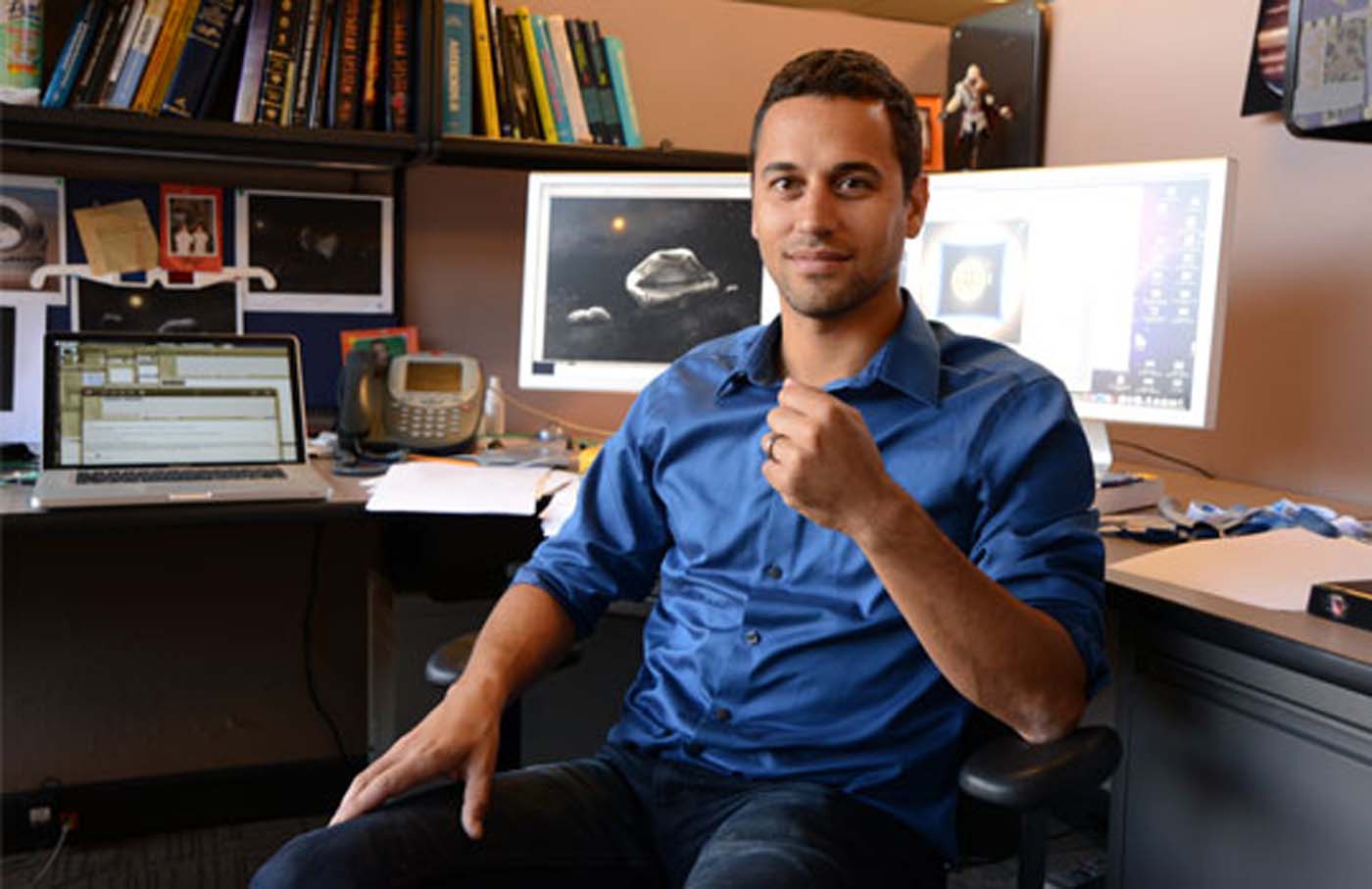
Excitement for the launch of the James Webb Space Telescope (JWST) hasn’t abated despite numerous delays and scientists in the field of extraterrestrial detection are especially eager to test its capabilities. Bill Diamond, President & CEO of the SETI Institute, spoke to the Washington Examiner about what many feel to be the most powerful instrument yet developed to observe our universe’s vast reaches:
"We can't even begin to imagine how much more we are going to learn," Diamond said of Webb.
The JWSTs primary mission will be to study the origin of the formation of the first galaxies, stars, and planetary systems to arise out of the Big Bang. Much of that fits into the Drake Equation, an approach to estimating the number of technological beings that might exists in the universe created by SETI pioneer and Chair Emeritus of the SETI Institute’s Board of Trustees, Frank Drake. Further, the JWST will be able to detect biosignatures – elements and molecular compounds that may be associated with lifeforms – on distant worlds. With exceedingly numerous planetary systems being discovered, including many in the so-called habitable zone of their star, along with the detection of liquid water elsewhere in our own solar system, the odds that we will not discover life beyond Earth seem to be shrinking:
"We are prejudiced by limitations of our own knowledge," Diamond said of the near-unfathomable scale of the Milky Way.
… But the “odds of finding extraterrestrial life only get better" with the wider range of technology at scientists' disposal," including the James Webb telescope, he said.
"It could happen tomorrow, it could happen next week, or in the next several decades," he added.
The SETI Institute’s multidisciplinary team of scientists will be among those eagerly awaiting the JWSTs 2021 launch.
- Washington Examiner: James Webb Space Telescope to be a powerful eye in search for alien life
 SETI Institute CEO Bill Diamond on the Search for Extraterrestrial Life
SETI Institute CEO Bill Diamond on the Search for Extraterrestrial LifePC Magazine paid a visit to the SETI Institute’s headquarters in Mountain View, California, to talk to President & CEO Bill Diamond about current research into the origin and nature of life in the universe. In particular, Diamond spoke about the work of several talented researchers who are among the 130 scientists, educators, and administrators that make up the SETI Institute, emphasizing their collaborative efforts with NASA:
Nathalie Cabrol, Janice Bishop, Pascal Lee, and Ross Beyer have helped identify landing sites for Mars missions; Philippe Sarrazin developed the XRD/SRF CheMin X-ray diffraction system on the Curiosity Rover; and Pablo Sobron is developing a revolutionary Raman spectrometer for NASA missions to Enceladus and Europa. Mark Showalter is discovering new planets and moons around the gas giants and Pluto, and Franck Marchis is detecting them around asteroids. The SETI Institute's Kepler/TESS team is developing new algorithms to find new exoplanets from the Kepler and Tess mission datasets. We are also collaborating with NASA on the Frontier Development Lab, which is an AI research accelerator for NASA Space Science.
For those who’ve watched too many films about alien invaders: Diamond is optimistic that any extraterrestrial being, having traveled the incredibly vast distances of space to reach us, “by default, is vastly more advanced than we are,” and unlikely to visit just to obliterate humanity.
- PC Magazine: Here's Why Aliens Will Probably Come in Peace
The Breakthrough Listen project recently announced a partnership with the MeerKAT radio-telescope array in South Africa. This collaboration allows the project to extend its reach, and technology installed by the Breakthrough Listen will allow for technosignature searches to commence continuously, at the same time as other scientific observations are being performed by MeerKAT. Andrew Siemion, Bernard M. Oliver Chair for SETI Research at the SETI Institute, commented in a press release quoted by Space.com:
"With this new instrument, we'll be able to form many beams at the same time, obtaining high-resolution data for multiple objects simultaneously," Breakthrough Listen Principal Investigator Andrew Siemion said in the same statement. "This complements and extends our capabilities at other telescopes, enabling us to survey our cosmic neighborhood for technosignatures faster than ever before."
Public interest in the search for signs of extraterrestrial technology has grown, following hints that Congress might consider funding for such initiatives for the first time in decades, and a recent NASA technosignatures workshop to discuss the field of SETI now and in the future. Siemion was one of several SETI Institute-affiliated speakers at the workshop. According to Futurism, Siemion also appeared on Reddit recently to answer questions about technosignature searches, and reaffirmed that NASA is not planning to contact advanced life beyond Earth, only attempt to detect it:
On Reddit, workshop speaker Andrew Siemion, Director of Berkeley SETI Research Center, said that if NASA does identify alien life, it will exercise caution.
“There are no plans to attempt communication — our technosignature searches are looking and listening,” he said.
You can read more about the SETI Institute's work in technosignature detection here.
- Space.com: Breakthrough Listen to Search 1 Million Stars for ET Signals Using South African Scopes
- Breakthrough Initiatives: Breakthrough Listen, The World’s Biggest SETI Program, To Incorporate The Southern Hemisphere’s Biggest Radio Telescope – The MeerKAT Array – In Its Existing Search For Extraterrestrial Signals & Technosignatures
- Futurism: NASA Is Looking For New Ways To Detect Alien Technology
If the thought of humanity being wiped out by a giant asteroid like the one that killed the dinosaurs keeps you up at night, SETI Institute research scientist Michael Busch has some reassuring words, according to Mashable:
"We think we've discovered everything out there that's larger than 1 km across," Busch, who has been tracking asteroids since 2005, told me from his office in Mountain View, California. "Anything smaller than a kilometer would only cause regional destruction."
Still, "regional destruction" is no joke.
The next frontier for scientists like Busch is finding all space rocks larger than 100 meters in diameter — the kind that "if it fell on a city, there's no more city," he says.
Busch's work, and the work of many other scientists across the globe, remains critically important to the safety of earthlings. Public attention to the danger spiked in 2013 when a meteorite exploded over Russia near Chelyabinsk, causing over 1000 injuries and damaging more than 7000 buildings in the blast.
The Chelyabinsk rock was a mere 20 meters wide. Which helps to make Busch's point that the rocks that remain still pose a threat, even if they aren't going to be ending human civilization any time soon.
In fact, he thinks it's high time Hollywood made a more realistic film — perhaps one about a 100-meter-wide city-killer landing on a major metropolis. "If we can get someone interested in that, I'm happy to advise," Busch says.
Hollywood, take note! We have the perfect consultant to help you make the next asteroid movie have some real impact.
 Franck Marchis: eVscope on Morning Calm
Franck Marchis: eVscope on Morning CalmSETI Institute senior planetary astronomer Franck Marchis is “in the limelight” in an article for the Morning Calm, a Korean magazine, which took a close look at the Unistellar eVscope. Marchis joined forces with Unistellar, a French start up, to produce the compact and user-friendly eVscope, which uses advanced image sensing and GPS technology to bring amateur astronomers incredible views of the sky normally reserved for professionals with much larger (and more difficult to use) equipment. Unistellar and the SETI Institute have partnered to bring the eVscope’s advanced imaging technology to amateur astronomy and enable impactful new research through global citizen science.
You can find out more about Marchis’ work and the eVscope on our website, SETI.org
- Morning Calm: In the Limelight – Unistellar
- SETI.org: Scientist Interview - Franck Marchis - Life at the SETI Institute
- SETI.org: Capturing an Occultation and a Snapshot of Pluto’s Atmosphere
NASA's Frontier Development Lab (FDL) concluded its third year this past summer, having spent weeks at the SETI Institute’s Mountain View headquarters and NASA Ames Research Center developing AI solutions to address a range of challenges related to exploring our Solar System and beyond. Popular Science and Tech Republic both noted that among the projects developed, which ranged from asteroid detection to mapping the Moon, was an innovative approach to the search for alien life. FDL participants created thousands of virtual planets, and then train a neural network to search the atmospheric data for signs that could indicate the presence of life. As technology improves, allowing researchers to find and study exoplanets in unprecedented detail (even, in some cases, the content of their atmospheres), this technology may become an important tool for the search for life in the universe.
You can read more about FDL on our website, SETI.org.
- Popular Science: Oodles of virtual planets could help Google and NASA find actual aliens
- Tech Republic: Hunting alien planets and protecting Earth from asteroids: Five ways NASA is using AI
In last week’s episode, enjoy an encore of Wonder Women, celebrating the women who battle sexism to pursue careers in science. On our previous week’s episode, BiPiSci’s monthly look at critical thinking examined whether medical science can compete with self-service alternatives, like apps and AI, in Skeptic Check: Heal Thyself.
Last week on Facebook Live, SETI Institute CEO Bill Diamond and research scientist Michael Busch discussed Ryugu, the Hayabusa 2 spacecraft, and the MASCOT rover. On our previous episode of Facebook Live, Nathalie Cabrol, Director of the Carl Sagan Center, shared some of the exciting work she and her team are doing. Videos of all past Facebook Live events can be found on our Facebook page: https://www.facebook.com/SETIInstitute/
- Wired 25th Anniversary Festival: October 12-15, San Francisco, CA Jill Tarter, co-founder of the SETI Institute, will take part in the festival and present "The 21st Century: The Century of Biology on Earth and Beyond"
- Fermilab Arts and Lecture Series: October 12, Batavia, IL Jill Tarter, SETI pioneer and Chair Emeritus for SETI Research at the SETI Institute will present
- Science with HabEx: UV to Near-Infrared Space Astronomy in the 2030s: October 15-16, New York, NY SETI Institute Senior Scientist Franck Marchis will be an invited speaker
- SETI Talks: October 16, Menlo Park, CA From Cowboys to Communities: Changing the Face of Space Exploration The SETI Institute’s Margaret Race will be joined by Jan Millsapps, Professor Emeritus of Cinema at San Francisco State University and Brian Patrick Green, director of technology ethics at the Markkula Center for Applied Ethics at Santa Clara University
- 2020 Landing Site for Mars Rover Mission: October 16-18, Glendale, CA SETI Institute scientist J.R. Skok will present about the Northeast Syrtis landing site
- SpaceTalks: October 20 Jasper, Alberta Canada Seth Shostak will participate in the panel discussion
- Division of Planetary Sciences Meeting: October 21-26, Knoxville, TN SETI Institute scientists are expected to participate
- NASA’s Kepler & K2 Missions: October 24, Bremerton, WA Jeff Coughlin, SETI Institute scientist and Director of the K2 Science Office, will giving a public talk at Olympic College in Bremerton, WA.
- The Undiscovered: October 26, Cambridge, MA Jill Tarter, Chair Emeritus for SETI Research at the SETI Institute will be a keynote speaker
- Toward an All-Sky Radio SETI Telescope: October 29-31, Manchester, UK Jill Tarter, Chair Emeritus for SETI Research at the SETI Institute is a member of the Scientific Organizing Committee
- 2018 Solar Dynamics Observatory Science Workshop: Catalyzing Solar Connections: October 29-November 2, Ghent, Belgium SETI Institute Research Scientist Meng Jin is a member of the Science Organizing Committee
- World Premiere – The Sound of Silence: November 10, Brooklyn, NY Concert featuring new work composed by SETI Artist-in-Residence Felipe Pérez Santiago and inspired by the work of Jill Tarter, Chair Emeritus for SETI at the SETI Institute





